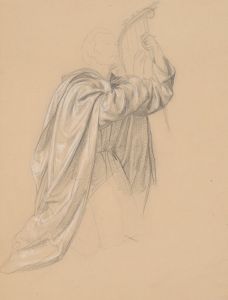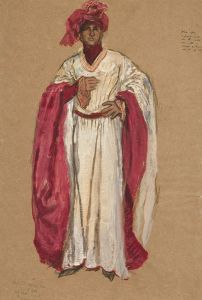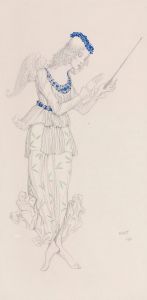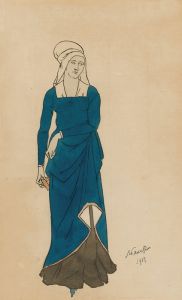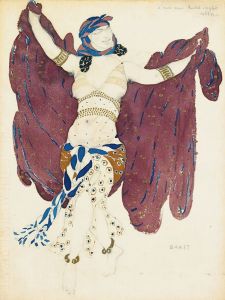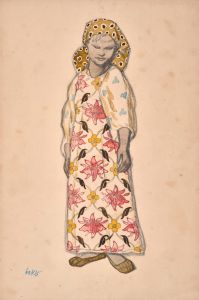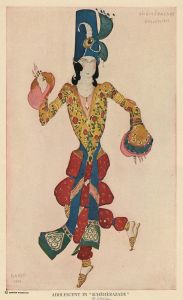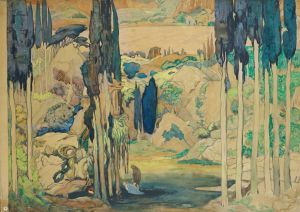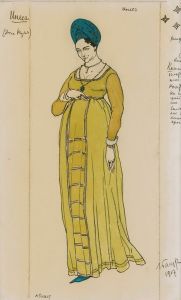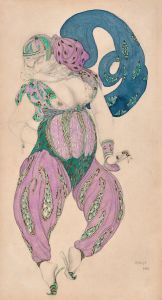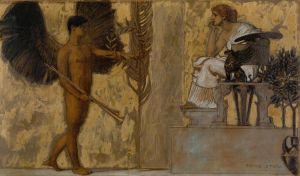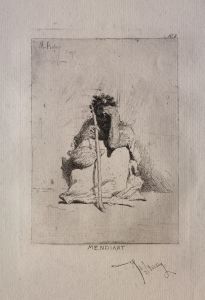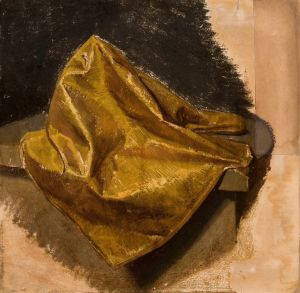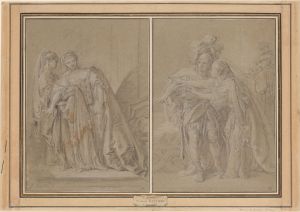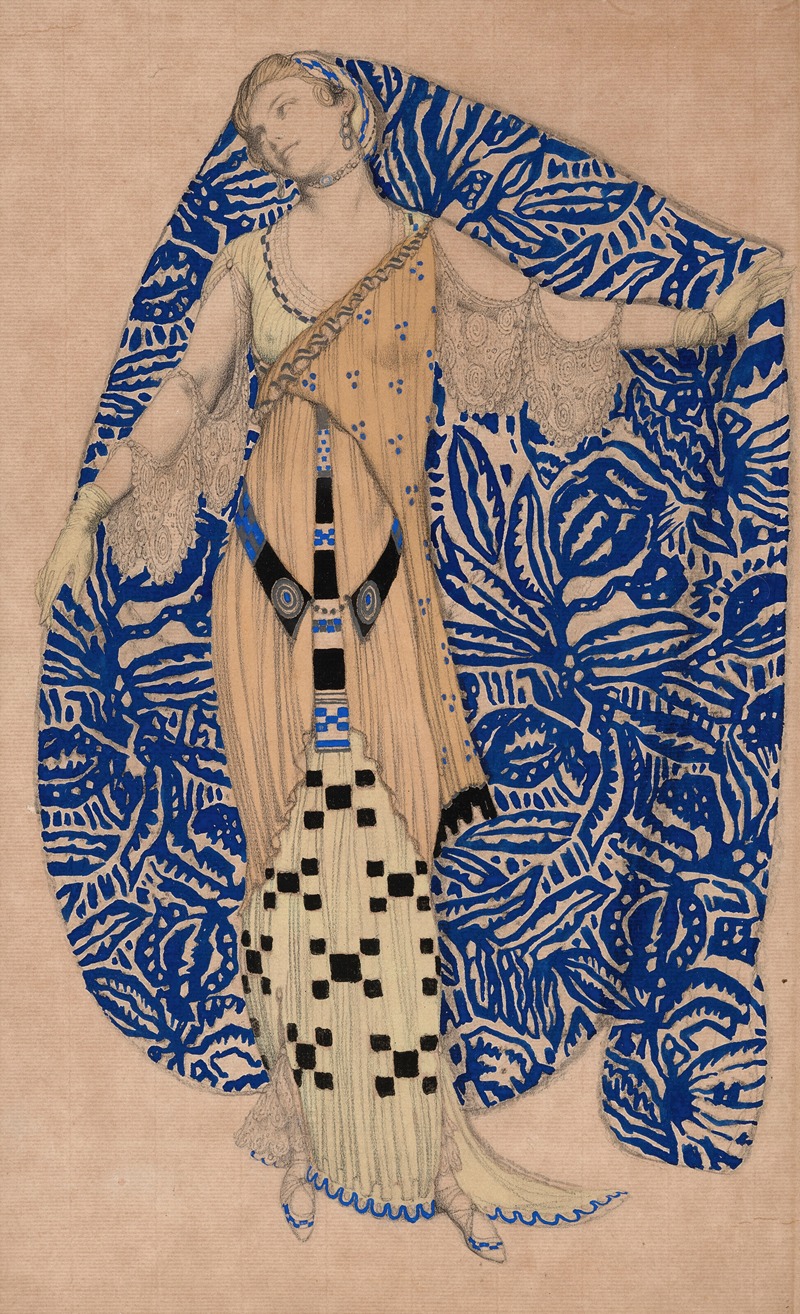
Fantaisie sur un costume moderne, Dioné
A hand-painted replica of Léon Bakst’s masterpiece Fantaisie sur un costume moderne, Dioné, meticulously crafted by professional artists to capture the true essence of the original. Each piece is created with museum-quality canvas and rare mineral pigments, carefully painted by experienced artists with delicate brushstrokes and rich, layered colors to perfectly recreate the texture of the original artwork. Unlike machine-printed reproductions, this hand-painted version brings the painting to life, infused with the artist’s emotions and skill in every stroke. Whether for personal collection or home decoration, it instantly elevates the artistic atmosphere of any space.
Léon Bakst, a renowned Russian painter and scene and costume designer, is celebrated for his contributions to the world of art and theater, particularly through his work with the Ballets Russes. One of his notable works is "Fantaisie sur un costume moderne, Dioné," which exemplifies his unique style and innovative approach to costume design.
Léon Bakst was born as Lev Samoilovich Rosenberg in 1866 in Grodno, which was part of the Russian Empire at the time. He studied at the St. Petersburg Academy of Arts and later in Paris, where he was influenced by the vibrant art scene. Bakst became a prominent figure in the world of theater design, particularly through his collaboration with Sergei Diaghilev's Ballets Russes, a groundbreaking ballet company that brought together some of the most talented artists, composers, and dancers of the early 20th century.
"Fantaisie sur un costume moderne, Dioné" is a testament to Bakst's ability to blend traditional and modern elements in his designs. While specific details about this particular work are limited, Bakst's style is characterized by its bold use of color, intricate patterns, and a deep understanding of the theatrical form. His designs often drew inspiration from a variety of sources, including Russian folklore, Orientalism, and classical antiquity, which he reinterpreted in a modern context.
Bakst's work was revolutionary in that it broke away from the more subdued and realistic costumes of the 19th century, introducing a new era of vibrant and expressive theatrical design. His costumes were not only visually stunning but also served to enhance the narrative and emotional impact of the performances. This approach helped to elevate the role of costume design in theater, making it an integral part of the storytelling process rather than just a decorative element.
The influence of Bakst's work extended beyond the theater. His designs were celebrated in the fashion world, inspiring contemporary fashion designers and contributing to the development of modern fashion aesthetics. The vivid colors and exotic motifs found in his work resonated with the Art Nouveau and later Art Deco movements, which emphasized decorative arts and bold, geometric patterns.
Bakst's legacy is evident in the continued appreciation and study of his work. His ability to merge art and theater in such a dynamic way has left a lasting impact on both fields. While "Fantaisie sur un costume moderne, Dioné" may not be as widely documented as some of his other works, it undoubtedly reflects the innovative spirit and artistic vision that Bakst brought to all his creations.
In summary, Léon Bakst's "Fantaisie sur un costume moderne, Dioné" is a reflection of his pioneering approach to costume design, characterized by a fusion of traditional and modern elements, vibrant colors, and intricate patterns. Bakst's work not only transformed theatrical design but also influenced broader artistic and fashion trends, cementing his place as a key figure in the history of art and theater.





